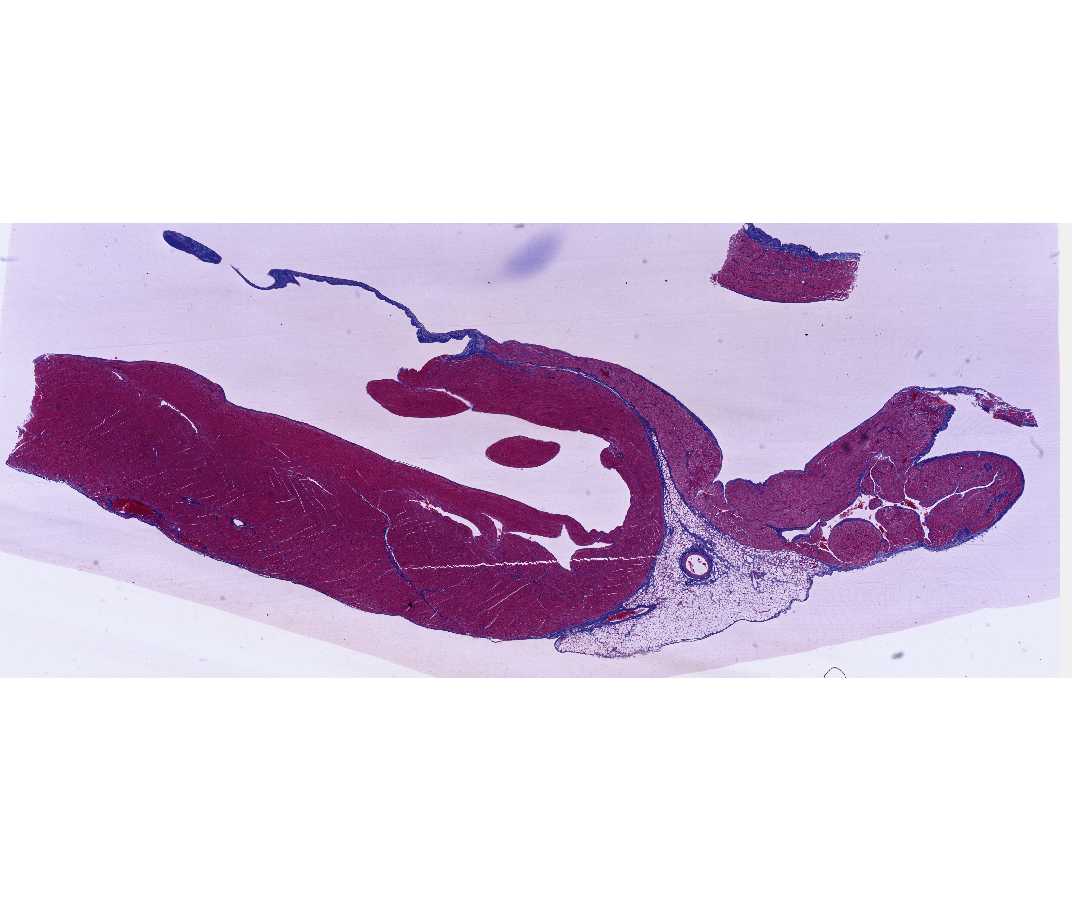SBPMD Histology Laboratory Manual
Muscle: Cardiac Muscle
Cardiac muscle, which is cross-striated muscle, is peculiar to the heart and to the roots of large veins entering the heart (in particular, pulmonary veins).
#17 Heart, Monkey (Mallory-Azan)
Open with WebViewer
In this preparation, muscle fibers are stained brownish-pink, collagenous fibers bright blue, muscle nuclei pale pink, fibrocyte nuclei and red blood cells bright red. Examination of the preparation with the scanning objective will reveal that cardiac muscle consists of cell columns or irregularly shaped cellular areas separated by a considerable amount of bright-blue connective tissue. Under higher power, the endomysial connective tissue can be seen to be rather plentiful and particularly rich in blood capillaries (which are readily identifiable by their erythrocytes). Where cardiac muscle fibers have been cut lengthwise, identify: cross-striations, branching and anastomoses, darkly stained intercalated disks, ovoid nuclei (all of these are diagnostic features). Are the cardiac muscle fibers of uniform diameter? What is the position of the nuclei? Identify both straight and stepped or zigzag intercalated disks; do the myofibrils pass through them? Are the cross-striations as distinct as in skeletal muscle? In muscle fibers cut in cross-section, note the relatively large, centrally located nucleus with large amounts of perinuclear sarcoplasm; notice that some sections of fibers, lacking a nucleus, show a central mass of sarcoplasm. How can you distinguish cross sections of cardiac muscle fibers from those of skeletal muscle fibers?